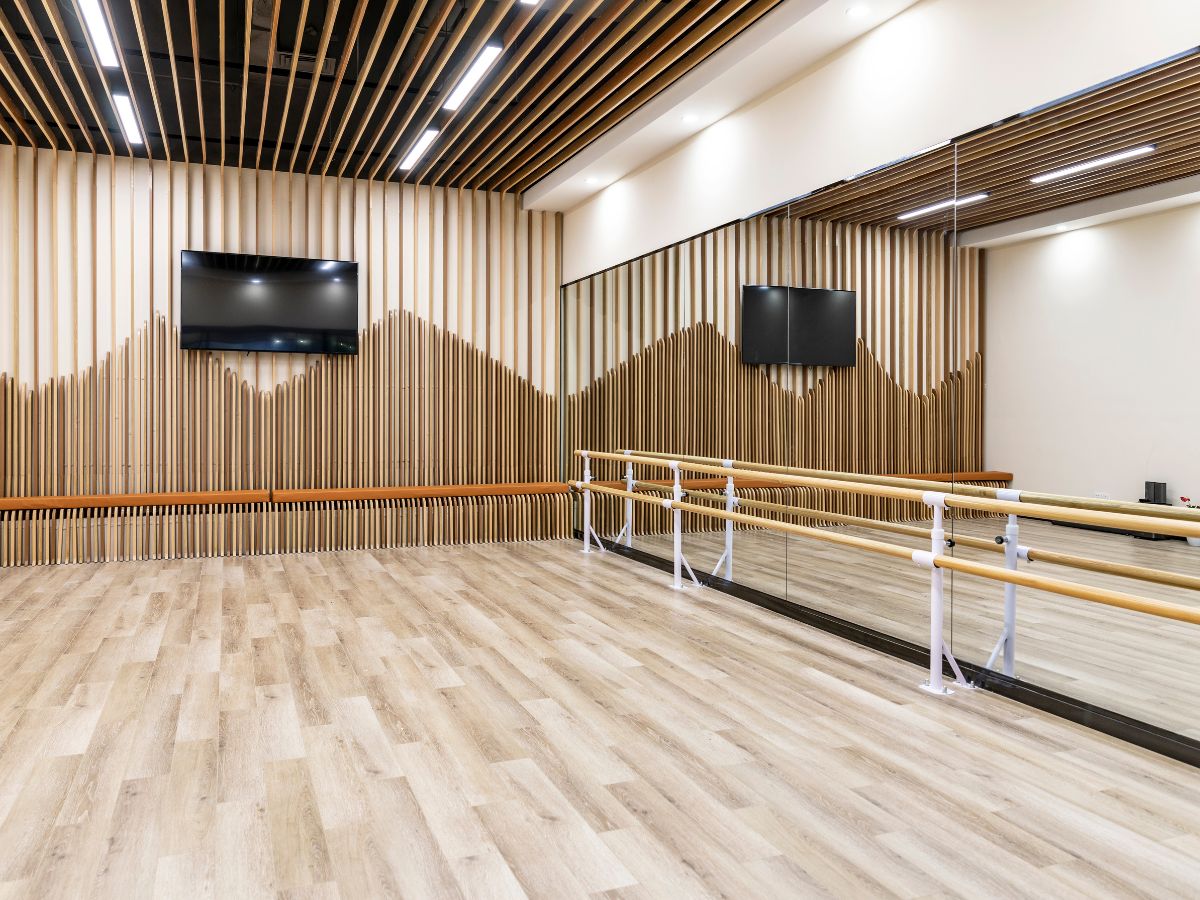You’ve grown up dancing. Or you’ve been a dance teacher for years and possibly even a manager or director of a studio, but you have the desire to do more. You want to own your own dance studio.
When building a dance studio and community of students from the ground up doesn’t fit into your plan, you may find that your new goal is to buy a dance studio instead.
So how do you buy a dance studio? We’re glad you asked.
How Do I Buy a Dance Studio?
Purchasing any small business starts with intense planning, research and dedication. But if it’s truly something you want to see through, there’s no reason that you can’t see your goal succeed.
That’s why we’ve teamed up with Jackrabbit Dance clients, Angie Henley and Hayley Justice of Legacy Dance Center to get a few pointers on the best way to navigate the process of buying and selling a dance studio.
In July 2019, Angie sold her North Carolina-based dance studio, Angie’s Dance Academy to her long-time student, friend and Studio Co-Director, Hayley. During our time together, the two shared some tips for those looking to sell or buy a dance studio. Together, we’ll break down each step of the process.
Here’s everything you need to know about the first step to selling or buying a dance studio.
Step One: Understand the timeline of buying and selling a dance studio
From writing a business plan to securing financing through a bank, a potential buyer must consider taking certain steps before purchasing a dance studio. It’s no surprise that these steps take time, so make sure you have a firm understanding of how long each step will take before you reach out to any particular buyer.
3 Things Buyers Should do One Year Prior to Purchasing a Dance Studio
1. Seek advice for starting a small business
If purchasing a dance studio is your first step into the world of small business ownership, both Angie and Hayley recommend obtaining advice from the U.S. Small Business Administration.
Never heard of them? The SBA offers free counseling and low-cost training to entrepreneurs, as well as an array of financing options for small business owners. We’ll talk more about financing later, though.
After some time well spent discussing your goals and financial situation with your caseworker, you’ll be off to the races with the best practices for implementing your business plan to start your own business.
Whether you seek the assistance of an organization like the Small Business Administration or a separate advisor, make sure they have bought into your vision. Hayley found herself sharing her milestone achievements with her SBA caseworker. And at the end of the day, don’t you want someone who’s on your side that truly cares about the success of your business? We thought so!
2. Obtain a small business loan
Whether you’re obtaining a small business loan, plan to finance through personal savings or finance through the existing studio owner, securing the funds to purchase a dance studio can take anywhere from a few months to almost a year to line up.
To obtain a small business loan for the purchase of a dance studio, you must first become pre-approved by a lender. This step is easier for some than others. And each potential studio owner’s experience will be as unique as their own personal dance style.
When taking steps to obtain financing for a small business, you must take into consideration the possibility of not becoming pre-approved by every lender. The important thing to remember is to not get discouraged. The wind may get knocked out of your sails for a brief period of time, but don’t forget to use your resources.
What does that mean, exactly?
As a dance teacher, think of how many dance moms and dads that you know who work in the banking industry. Both Angie and Hayley were put in touch with their small business loan officer through the connection of a parent whose child they taught. Pretty serendipitous, huh?
Whether you’re loan application gets turned down zero times or three times, keep trying. The right lender is out there for you. You just have to believe in yourself enough to find the right loan officer who believes in you that will back your dream.
3. Save for a down payment
Just like buying a house, a down payment is required for a small business loan. Generally, banks require a 20 percent down payment at the time of close. Don’t let that cost sneak up on you, as saving for a down payment takes time and discipline.
If 20 percent is not an option for you financially, don’t run (or chassé) for the hills. Do some research on what alternative options you may have. For example, if you finance through the Small Business Association, you may only be required to put 10 percent down at closing.
Enter sigh of relief here.
If saving isn’t your strong suit, here are some tips for saving for your down payment:
- Start a budget and stick with it.
- Cancel your weekly trips to Target or any other store you can spend $100 on toilet paper on.
- If your monthly car bill is a little out of hand, trade it in for a cheaper option.
- Save on interest by skipping the payment plan option at furniture and big box retailers such as Lowe’s or HomeDepot.
- Get paid to do what you love by turning your non-dance-related hobbies like graphic design and photography into a side hustle.
5 Things Dance Studio Owners Should do One Year Before Selling
1. Write your succession plan
As the head of your dance studio, how do you want the new owner to succeed you? Do you want to stay on staff at the new studio in a teaching or advising capacity for a year or two before you completely step away from the studio? Or do you want a clean break after the purchase is complete?
These are all questions you must ask yourself as an owner prior to meeting with potential buyers.
If you’re selling your dance studio to someone within your organization, start giving that individual more responsibilities around the studio that will be noticed by both parents and students. Subliminally show your customers that they are in good hands with the soon-to-be new owner, without spilling the beans that a transition is in the future, by having the current staff member:
- Send out important studio communications, such as email updates and monthly newsletters;
- Coordinate upcoming events, such as community performances and recitals;
- And give them the power to make decisions that impact the business, such as staff communication and scheduling.
2. Make improvements to your studio
Let’s face it, fixer uppers are best when handled by professionals like Chip and Joanna. You’ll be hard pressed to find potential new owners who want to come in and drop a pretty penny on renovating your dance studio.
That’s why routine maintenance and basic improvements are so important to the value of your business.
If your ballet studio needs new marley floors, purchase and install quality products that will attract buyers. The same goes with your sound system, barres and props, to name a few.
Don’t give up on your studio just because you want to sell it, thinking it will soon be someone else’s responsibility. Keep it up so the value of your dance studio will go up and your business will be marketable.
While some buyers will have the desire to purchase a fixer-upper, know it’s always in your best interest to keep up with maintenance and repairs in the years leading up to the sale of your dance studio.
3. Get your finances in line
As a business owner, you should always have you finances in order. Being prepared with at least three years of financial information will allow you to quickly and accurately disclose information such as your studio’s profit and loss statements and tuition and billing structure, to name a few.
At the end of the day, your studio is a business and the person (or people) buying it need to know it’s strong and robust.
4. Properly reorder inventory
Does your dance studio have an on-site retail store? Stop scrolling if you answered yes!
As the owner of you studio, you must take into consideration any and all retail inventory that is branded with your current studio’s name. Yes, the branded pink and purple leotards your pre-school classes wear are adorable, but what’s not adorable is being left with boxes of unsold, branded apparel when your studio changes ownership. Hello, money down the drain!
As you get closer and closer to your closing date, take a hard look at what inventory historically sells slowly. When the time comes to reorder those slow-moving products, you’ll have to make the decision to order a smaller quantity, or completely phase those retail items out of your store so you’re not left with extra, unsold product when your business sells.
5. Establish your key terms as the seller
As the seller, it’s expected for you to draft the key terms of the purchase of your dance studio. Purchase price, date of settlement, equipment included in the sale, real estate, intellectual property and vendor contracts are all examples of things to include in your key terms.
Understand that the buyer will be coming to the table with a list of their terms, so some negotiations will be required during this phase of the purchase. The important part here is to know which terms you are willing to budge on and which are non-negotiable.
Seek the expert advice of a commercial Realtor® to assess the value of your building if you plan to include any property you own as part of the dance studio’s purchase.
Looking Ahead
There are a number of things to consider when deciding to buy or sell any small business. Continue reading with the Second Step of how to buy a dance studio: establishing your brand.
Or try Jackrabbit Dance for free and see how Jackrabbit can increase your revenue, make reporting easy, and set you up for success if you are thinking about buying or selling a dance studio.






